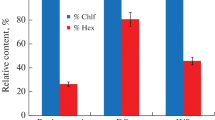Summary
In coconut oil naturally contaminated with aflatoxin B1, more than 85% of the toxin is present in the soluble form, the remainder occuring in the sediment. This aflatoxin is detoxified when the oil, in a static layer less than 15 mm thick is exposed to solar radiation. A pilot plant, designed to take account of the viscosity and flow characteristics of the oil, was constructed for the exposure of thin layers of oil (2 mm or less) flowing under gravity. At aflatoxin concentrations between 166 and 1250 jug/kg, 75% of the toxin was degraded on exposure to solar radiation of 10 cal/cm2; total detoxification was achieved on repeated exposure. The naturally contaminated coconut oil after exposure to solar radiation did not contain any residual aflatoxins or fluorescent compounds which might have been derived from original aflatoxin B1.
Résumé
Usine-pilote pour la détoxification, par irradiation solaire et centrifugation, de l'huile de coprah contaminée par l'aflatoxine B1
Dans l'huile de coprah spontanément contaminée par l'aflatoxine B1, plus de 85% de la toxine est présente sous forme soluble, le reste se trouvant dans le sédiment. Cette aflatoxine est détoxifiée lorsque l'huile est exposée à la radiation solaire en couche statique de moins de 15 mm d'épaisseur. Une usine-pilote, conçue en tenant compte de la viscosité et de l'écoulement de l'huile, a été construite pour irradier une mince couche d'huile (2 mm ou moins) s'écoulant par gravité. Pour des concentrations en aflatoxine allant de 166 à 1250 μg/kg, 75% de la toxine est dégradée par exposition à une irradiation solaire de 10 cal./cm2 et, en répétant le traitement, on obtient une détoxification complète. Après exposition à la radiation solaire, l'huile de coprah contaminée spontanément ne contient plus d'aflatoxine résiduelle, ni de composés fluorescents dérivés de l'aflatoxine B1 originelle.
Resumen
Planta pilota para el tratramiento de aceite de coco contaminado con aflatoxina B1 mediante radiation solar y centrifugado
En aceite de coco contaminado de forma natural con aflatoxina B1, más del 85% de la toxina se encuentra en forma soluble, el resto permaneciendo en el sedimento. Esta aflatoxina pierde sus propiedades tóxicas cuando se expone el aceite en forma de capa estática de 15 mm de grosor a la radiación solar. Se construyó una planta piloto diseñada teniendo en cuenta la viscosidad y las caracteristicas de fluidez del aceite de forma que pudieran exponerse a la radiación solar capas de aceite muy finas (2 mm o menos) fluyendo gracias a la gravedad. Cuando aceite conteniendo aflatoxina en proporciones entre 166 y 1250 /kg se expuso a una radiación solar de 10 cal./cm2 la toxina se degradó en un 75%. La detoxificación total se obtuvo mediante repetición del proceso. El aceite de coco contaminado de forma natural, una vez expuesto a la radiación solar no contenía aflatoxinas residuales ni compuestos fluorescentes potencialmente derivados de la aflatoxina B1 contenida originalmente.
Similar content being viewed by others
References
Aibara, K. &Yamagishi, S. 1968 Effects of ultraviolet irradiation on the destruction of aflatoxin B1. InProceedings ofthe First U.S.-Japan Conference on Toxic Micro-Organisms, ed. Herzberg, M. pp 211–221. Washington D.C.: U.S. Government Printing Office.
Andrellos, P. J., Beckwith, A. C. &Eppley, R. M. 1967 Photochemical changes of aflatoxin B1.Journal of the Association of Official Analytical Chemists 50, 346–348.
Andrellos, P. J. &Reid, G. R. 1964 Decomposition (Chemical Indexes): Confirmatory tests for aflatoxin B1.Journal of the Association of Official Analytical Chemists 46, 801–803.
Basappa, S. C. &Sreenivasa Murthy, V. 1977 State of aflatoxin in groundnut oil.Journal of Food Science and Technology 14, 57–60.
Basappa, S. C. &Sreenivasa Murthy, V. 1979 Decontamination of groundnut oil from aflatoxin by adsorption-cum-filtration.Indian Journal of Technology 17, 440–441.
Lillard, D. A. &Lantin, R. S. 1970 Some chemical characteristics and biological effects of photomodified aflatoxins.Journal of the Association of Official Analytical Chemists 53, 1060–1063.
Marth, E. H. &Doyle, M. P. 1979 Update on molds: degradation of aflatoxin.Food Technology 33, 81–87.
Parker, W. A. &Melnick, D. 1966 Absence of aflatoxins from refined vegetable oils.Journal of the American Oil Chemists' Society 43, 635–638.
Samarajeewa, U. &Arseculeratne, S. N. 1974 Control of aflatoxin contamination. 2. Detoxification of aflatoxin contaminated coconut oil.Proceedings of the Ceylon Association for the Advancement of Science 30, 36 (abstract).
Samarajeewa, U., Arseculeratne, S. N. &Bandunatha, C. H. S. R. 1977 Degradation of aflatoxin in coconut oil and copra meal.Journal of the National Science Council of Sri Lanka 5, 1–12.
Samarajeewa, U. &Arseculeratne, S. N. 1983 A survey of aflatoxin contamination of coconut products in Sri Lanka: incidence, origins and recommendations.Journal of the National Science Council of Sri Lanka 11 (in press).
Samarajeewa, U.,Gamage, T. V. &Arseculeratne, S. N. 1983 Aflatoxin contamination of coconut oil from small scale mills, toxin levels and their relation to free fatty acid content.Journal of the National Science Council of Sri Lanka 11 (in press).
Shantha, T. &Sreenivasa Murthy, V. 1975 Detoxification of groudnut oil.Journal of Food Science and Technology,12, 20–22.
Shantha, T. &Sreenivasa Murthy, V. 1977 Photo-destruction of aflatoxin in groundnut oil.Indian Journal of Technology 15, 453–454.
Shantha, T. &Sreenivasa Murthy, V. 1981 Use of sunlight to partially detoxify groundnut cake flour and casein contaminated with aflatoxin B1.Journal of the Association of Official Analytical Chemists 64, 291–293.
Author information
Authors and Affiliations
Rights and permissions
About this article
Cite this article
Samarajeewa, U., Jayatilaka, C.L.V., Ranjithan, A. et al. A pilot plant for detoxification of aflatoxin B1-contaminated coconut oil by solar irradiation. World J Microbiol Biotechnol 1, 333–343 (1985). https://doi.org/10.1007/BF01553418
Received:
Revised:
Accepted:
Issue Date:
DOI: https://doi.org/10.1007/BF01553418




